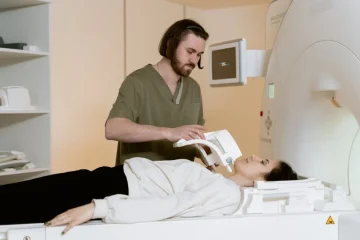Ensuring proper vaccine storage is critical for healthcare facilities. The success of vaccination programs relies heavily on the efficacy of vaccines, which, in turn, is contingent upon their safe storage. The delicate nature of vaccines requires meticulous attention to temperature, handling, and storage conditions to preserve their potency. In this blog, we will explore ten crucial tips for the safe storage of vaccines, looking into the intricacies of maintaining the cold chain and ensuring that vaccines remain effective from production to administration.
1. Understanding the Cold Chain. The cold chain is a vital component of vaccine storage and distribution.I involves transporting and storing vaccines within the temperature range of 35°F (2°C) to 45°F (8°C). It commences during manufacturing, passes through distribution centers, and concludes at the point of administration.A solid understanding of the cold chain is fundamental to ensuring vaccine efficacy.
2. Preserving Vaccine Efficacy: A Commitment to Adherence. Ensuring the effectiveness of vaccines demands unwavering adherence to manufacturer guidelines. Thoroughly inspecting the storage area, with assistance from compressed air systems professionals, becomes imperative. Each vaccine is packaged with meticulous guidelines specifying storage temperatures, conditions, and handling procedures. Those involved in the vaccine journey bear the responsibility of diligently preserving their potency. Preventing freezing, avoiding excessive heat, and shielding vaccines from direct sunlight or fluorescent light are critical measures. Any deviation from these guidelines poses a risk to the intended efficacy of vaccines, underscoring the significance of strict adherence throughout the storage and handling process.
3. Strategic Investment in Vaccine Storage Infrastructure. Consider allocating resources to procure specialized Laboratory Refrigerator and freezers designed exclusively for vaccine storage. These units should feature precise temperature control and monitoring systems, minimizing the risk of temperature excursions that could jeopardize vaccine integrity. It is crucial to designate a refrigerator solely for vaccine storage, ensuring its capacity aligns with your clinic’s vaccine supply needs. Maintain at least 50% filled space within the refrigerator to facilitate optimal air circulation, contributing to temperature stabilization and safeguarding the potency of stored vaccines. This strategic investment ensures a dedicated and controlled environment, mitigating potential risks associated with improper storage conditions.
4. Enhancing Vaccine Storage Security: Continuous Monitoring Solutions. Deploying continuous temperature monitoring systems, especially during power failures, is indispensable for ensuring the integrity of vaccine storage. These systems offer real-time data on storage conditions, providing immediate alerts in case of temperature fluctuations and enabling swift corrective measures. In the event of brief power outages, maintaining the refrigerator’s closed state is advised. However, for prolonged outages, a proactive approach involves transferring vaccines to an insulated container equipped with ice packs. For locations experiencing frequent power interruptions, considering the use of a portable generator or relocating vaccines to an alternative site with a stable power supply becomes a strategic measure to uphold storage reliability.
5. Comprehensive Staff Training. Thoroughly train personnel involved in vaccine storage on best practices. This includes proper handling procedures, routine monitoring, and emergency response protocols. Well-trained staff is instrumental in maintaining the cold chain.
6. Use Data Loggers for Documentation. During transportation or storage, employ data loggers to record and store temperature data. These devices offer a detailed log of temperature variations, aiding in accountability and analysis in case of deviations.
7. Ensure Proper Packaging for Transportation. Packaging is a critical aspect of vaccine transportation. Vaccines should be placed in insulated containers designed to maintain the necessary temperature during transit. Robust packaging protects vaccines from external temperature influences.
8. Strategic Planning of Routes and Transportation. Develop meticulous transportation plans that minimize the time vaccines spend outside the recommended temperature range. Consider factors such as the mode of transportation, routes taken, and potential stops along the journey.
9. Establish Emergency Response Protocols. Create clear and actionable emergency response protocols. These protocols should address unforeseen events such as vehicle breakdowns or delays, ensuring vaccines remain within the acceptable temperature range during emergencies.
10. Regular Audits and Reviews. Conduct regular audits of vaccine storage facilities and transportation procedures. This involves a comprehensive review of storage conditions, transportation methods, and adherence to standard operating procedures. Identify areas for improvement and implement corrective measures.
In conclusion,preserving the potency of vaccines is a shared responsibility that involves meticulous planning, adherence to guidelines, and continuous monitoring. By understanding the principles of the cold chain, investing in purpose-built equipment, and implementing comprehensive training and monitoring systems, stakeholders contribute significantly to the success of vaccination programs. The ten crucial tips outlined in this article provide a comprehensive guide to safe vaccine storage, ensuring that these life-saving medications remain effective and potent throughout their journey from production to administration.




